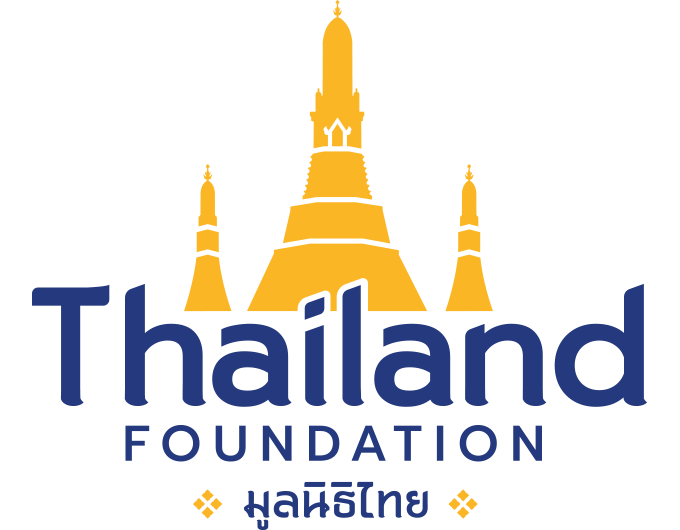Even though we are separated by language and distance, there is one celebration significantly shared worldwide: Mother’s Day. In Thailand, this special occasion is honored in a very unique and meaningful way; not only is it a heartfelt tradition representing love, respect, and unity, but also a reflection of the country’s long-rooted relationship with the royal family.
This article will guide you through an exploration of Thai Mother’s Day including its origins, symbols, activities, and deep-rooted values.

Historical Background
From past to present, it is fascinating to learn that Mother’s Day has been celebrated for over 82 years. Before the Thai Mother’s Day was placed on its current date, 12 August, it underwent several changes over time.
Held by the Ministry of Public Health, the first official celebration of Mother’s Day took place at Suan Amphorn (สวนอัมพร) on 10 March, 1943. Unfortunately, in the midst of World War II, the ceremony was discontinued. Later, in 1950, Mother’s Day was designated as 15 April, but not so long after, the celebration ceased again before moving to 4 October. However, this adjustment lasted only a year. Finally, in 1976, in honor of Her Majesty Queen Sirikit The Queen Mother’s Birthday, 12 August was declared as Mother’s Day.

Photo Credit : silpa-mag.com
Thus, Mother’s Day has come to be associated with the royal family, honoring the role of Her Majesty Queen Sirikit as the “mother figure” of the Thai people.
In Thai, the word “mae” (แม่) means mother, life-giver, and sacrificer. Her Majesty Queen Sirikit fulfilled the definition diligently as she consistently demonstrated her love, kindness, and unwavering dedication to the Thai people’s well-being. Thus, Queen Sirikit is tied to Mother’s Day celebrations and revered as the Mother of the Nation.

Photo Credit : thairath.co.th
Symbols of Mother’s Day
Let us now take a look at some elements of the celebration.
The Color Blue
In Thailand, each day of the week is associated with a specific color. The color light blue represents Friday, the day Her Majesty Queen Sirikit was born. Thus, on Mother’s Day, it is common to see Thai people wearing light blue shirts in honor of our beloved queen.

Photo Credit : Facebook Page “Thailand Foundation”
Jasmine
Jasmine, or Dok Mali (ดอกมะลิ) in Thai, is considered the flower of Mother’s Day. The flower was chosen because of its deep and meaningful qualities. Its white color represents purity and a mother’s unconditional love. Its soft, lingering fragrance suggests love that endures over time. And its delicate, layered petals are often seen as a symbol of a mother’s gentle embrace. Together, these qualities make jasmine a powerful representation of motherhood in Thai culture.

Photo Credit : kapook.com
Activities
Celebrations on Mother’s Day vary, from simple family gatherings to school activities and public events. Here are some examples.
Paying Respect to Your Mother
Thais pay respect to our mothers by performing the wai gesture, bowing at her feet, and giving her flowers, especially jasmine. This practice expresses deep love and gratitude to those we cherish and respect from the bottom of our hearts. It offers a meaningful opportunity to acknowledge the love of a mother and amend any wrongdoings toward them. This act is not limited to biological mothers but extends to anyone regarded as mother figures.

Photo Credit : js100.com
Giving Jasmine
As mentioned earlier, jasmine is the flower of Mother’s Day and it is common to see many people giving their mothers jasmine as a gesture of love and appreciation. During this special occasion, jasmines are so popular that we can see them everywhere, whether fresh garlands sold on the street or bouquets crafted in flower shops.

Photo Credit : js100.com
Family Gathering
Declared as a national holiday, Mother’s Day is a great opportunity for families to get together. On this day, many will return home to spend time with their family, making it a perfect time for expressing love and gratitude with one another. The way each family celebrates varies: some visit the temple for auspiciousness in life, some gather at restaurants for special meals, and some go on a trip. These moments help strengthen unity and harmony between family members.

Photo Credit : blog.hungryhub.com
School Activities
On this special day, schools across Thailand organize activities in honor of The Queen Mother and in appreciation of motherhood. During the ceremony, mothers are invited to the hall, where students present them with jasmine garlands as a symbol of love and respect. Some schools may arrange performances, with singing and dancing. Simple yet meaningful activities like writing letters and making cards are also included on this day.

Photo Credit : lh5.googleusercontent.com

Photo Credit : mgronline.com
Public Celebrations
As the celebration is dedicated to all mothers as well as the Mother of the Nation, it is considered one of the major events of the year. Schools, government organizations, and the private sector host exhibitions or ceremonies throughout this day. It’s also common to see parades of people in blue shirts lining the streets, paying heartfelt homage to Her Majesty.

Photo Credit : thairath.co.th
Values of the Celebration
At its core, Thai Mother’s Day reflects deeply held values centered on family, gratitude, and the essence of Thainess. It emphasizes the importance of honoring one’s parents, expressing love and respect, and maintaining close family bonds, all of which are central to Thai cultural identity. The day also embodies national pride by honoring Her Majesty Queen Sirikit The Queen Mother.
Respect and Gratitude to Parents
Rooted in a Buddhist cultural society, Thai people deeply value respect and gratitude, especially toward their parents. Mothers, seen as both life-givers and caregivers, are among the most important figures in one’s life. Showing respect and gratitude to mothers has thus become a long-standing tradition, passed down through generations.

Photo Credit : women.kapook.com
Familial Love and Unity
The celebration of Mother’s Day also highlights the importance of the family institution, emphasizing familial love and unity. It not only draws attention to a child’s appreciation for their mother, but also underscores the role of motherhood, encouraging mothers to be loving and supportive figures. With the continuous promotion of family values, Mother’s Day remains a meaningful tradition in modern Thai society, strengthening family bonds and fostering togetherness.

Photo Credit : thaihealth.or.th
National Identity and Connection with the Monarchy
What makes Thai Mother’s Day unique is its deep connection to the monarchy. By linking the family institution with the royal institution, the celebration became a part of Thailand’s national identity. The recognition of Her Majesty Queen Sirikit as the “Mother of the Nation” reflects the deep-rooted reverence for the monarchy, while also expanding the concept of motherhood. It is seen not merely as a biological role, but as one defined by love, care, and the nurturing spirit that truly embodies what it means to be a mother.

Photo Credit : silpa-mag.com
Conclusion
Mother’s Day has become a meaningful part of Thai heritage, one that gracefully transcends time. While the way it is celebrated may evolve, the core values remain: gratitude, unity, and a strong sense of national identity. At its heart, Thai Mother’s Day is a deeply emotional tradition that beautifully reflects the spirit of Thainess.
On 12 August, we warmly invite you to witness and take part in this special celebration. Whether you’re honoring a biological mother or a mother figure, the day offers a heartfelt opportunity to express your love and appreciation.
The celebration of Thai Mother’s Day is a heartwarming aspect of Thai culture and heritage, reflecting the core values of gratitude, family, and national unity. Join us as we continue to explore more stories from across Thailand and discover the rich diversity that shapes Thainess.
Sources
- https://www.thaipbs.or.th/news/content/342901
- http://event.sanook.com/day/motherday/
- https://asianspirit.co.th/en/blog/12-de-agosto-dia-de-la-madre-y-el-codigo-de-colores-en-tailandia/

Author: Ratsamheetum Noola
Detail
Uploaded on 13 August 2025

